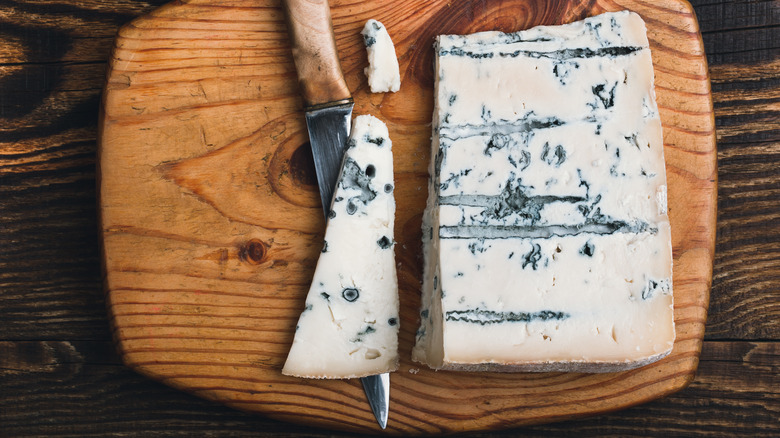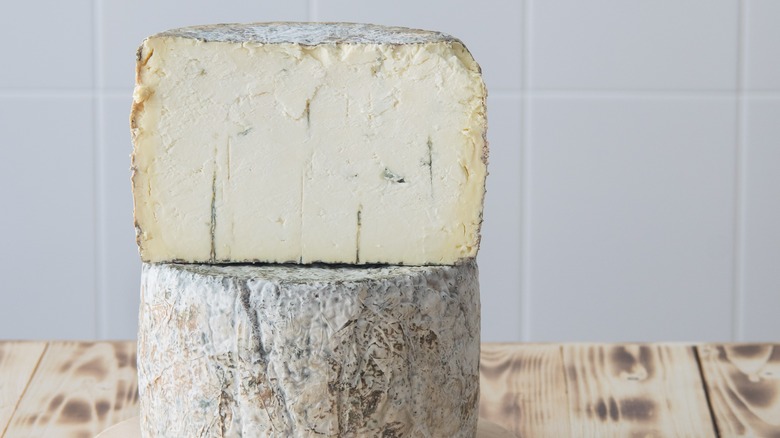The Origin Of Gorgonzola Cheese Is Shrouded In Legend
Blue cheese is one of those foods that people either despise or obsess over, but never anywhere in between. It's no secret that blue cheese is moldy. It's apparent from the smell alone, but one look at the blue-ish splattered cheese will confirm any suspicions. There are countless varieties of blue cheese but Gorgonzola, a cow's milk cheese from Northern Italy, has been a popular choice for more than a thousand years.
The earliest documentation of the funky cheese comes from 879. Historians have been exploring the cheese's origin for ages, continuously making new discoveries but still looking for concrete answers. Gorgonzola has a handful of origin stories, with some tracing it back to the natural caves of Pasturo and others linking the cheese to Milan's archbishop and the neighboring town of Gorgonzola. The true beginnings of gorgonzola may be murky, but no one has questioned its Italian roots.
Most of the legends have been centered around those three regions, but with dozens of different stories detailing the discovery. One legend follows young herdsmen making a quick stop in Gorgonzola on their way back to the Alps of Lombardy and foolishly forgetting the proper cheese-making tools. They experimented by combining different cheese curds and this mishap allegedly led to the creation of Gorgonzola. To get down to specifics, young curds were left overnight to drain and then combined with the fresh curds of the morning to create something entirely new, and funky: Gorgonzola cheese.
Italy's oldest creamy, stinky cheese
The belief that gorgonzola was created in Pasturo, Valsassina connects to the consistent chilly temperature of the region's mountain caves, bouncing between 6 and 12 degrees Celsius. This subterranean climate was the ideal environment for aging cheese. That has proven to be the case to this day, with Italian cheesemakers still utilizing ancient caves for the aging process.
There's also one petty myth behind gorgonzola revolving around an act of vengeance. As the story goes, a Gorgonzola innkeeper was being pestered for cheese by some tipsy guests and she served them spoiled stracchino with a chuckle. Her revenge unfortunately backfired, as the rowdy customers loved the cheese, especially paired with a soft, savory wine. Stracchino, an Italian cow's milk cheese, has a somewhat sharp taste with an ultra-smooth and creamy texture. Those tasting notes probably sound familiar as it's the foundation of gorgonzola minus its blue-veined funk. Gorgonzola was actually introduced as stracchino verde — a nod to its greenish-blue streaks of mold.
Gorgonzola didn't take off immediately. It took time for people to trust the process and tear into a stinky, moldy piece of cheese, but ultimately they came around. Around the 11th-century cheesemakers demonstrated confidence in the process and by the 19th-century, gorgonzola was being exported all over Europe.

